Media Ivory | Period Anthropomorphism | |
 | ||
Similar Venus of Hohle Fels, Venus of Willendorf, Venus of Brassempouy, Venus of Laussel, Venus of Lespugue | ||
40000 years old narasimha lion man idol found in germany hindu god
The Löwenmensch figurine or Lion-man of the Hohlenstein-Stadel is a prehistoric ivory sculpture that was discovered in the Hohlenstein-Stadel, a German cave in 1939. The name currently used in German, Löwenmensch, means "lion-human".
Contents
- 40000 years old narasimha lion man idol found in germany hindu god
- History
- Interpretation
- Manufacture
- References
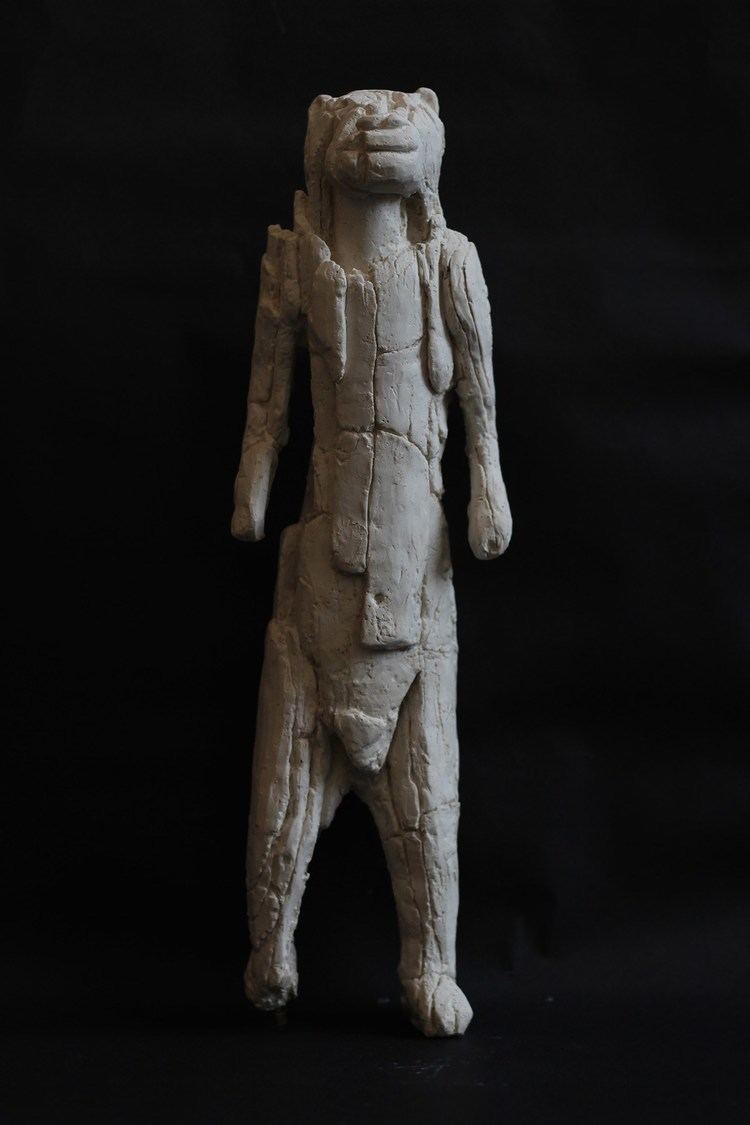
The lion-headed figurine is the oldest-known zoomorphic (animal-shaped) sculpture in the world, and the oldest-known uncontested example of figurative art. It has been determined to be between 35,000 and 40,000 years old by carbon dating of material from the layer in which it was found, and is thus associated with the archaeological Aurignacian culture. It was carved out of woolly mammoth ivory using a flint stone knife. Seven parallel, transverse, carved gouges are on the left arm.

After several reconstructions which have incorporated newly found fragments, the figurine stands 31.1 cm (12.2 in) tall, 5.6 cm (2.2 in) wide, and 5.9 cm (2.3 in) thick. It is currently displayed in the Ulm Museum, Germany.
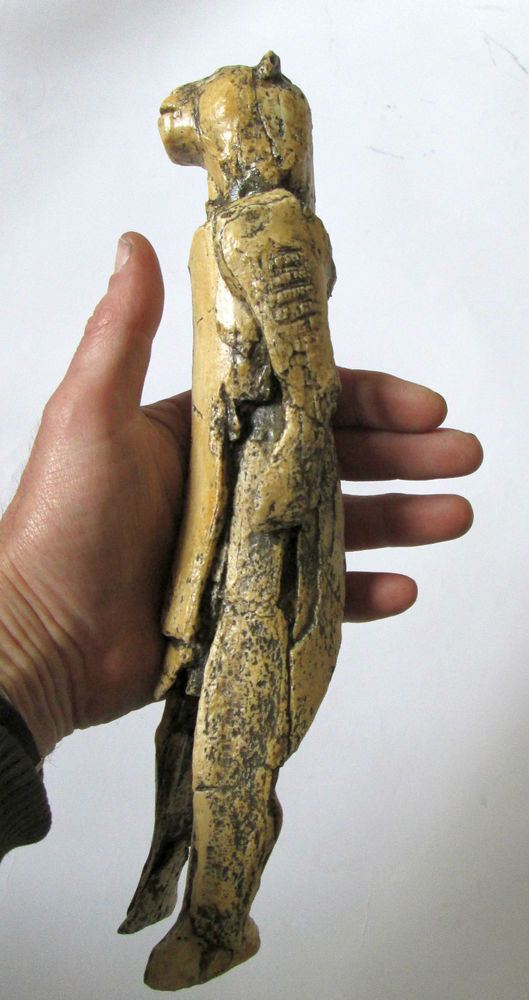
History
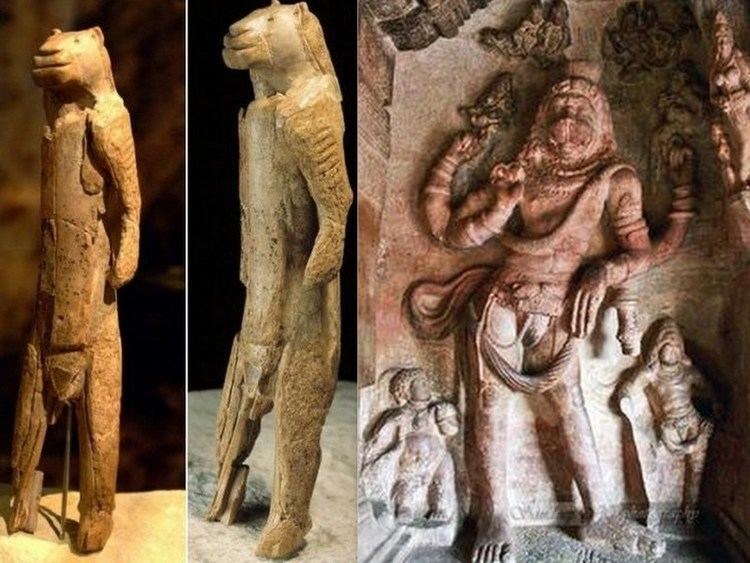
Systematic excavations at Hohlenstein-Stadel cave began in 1937 under the direction of prehistoric historian Robert Wetzel. The discovery of a fragmented mammoth-ivory figurine was made on 25 August 1939 by geologist Otto Völzing. The start of World War II just one week later meant that the fieldwork was left incomplete and analysis of the finds was not undertaken. The excavation trenches were backfilled with the same soil in which the ivory had been found.
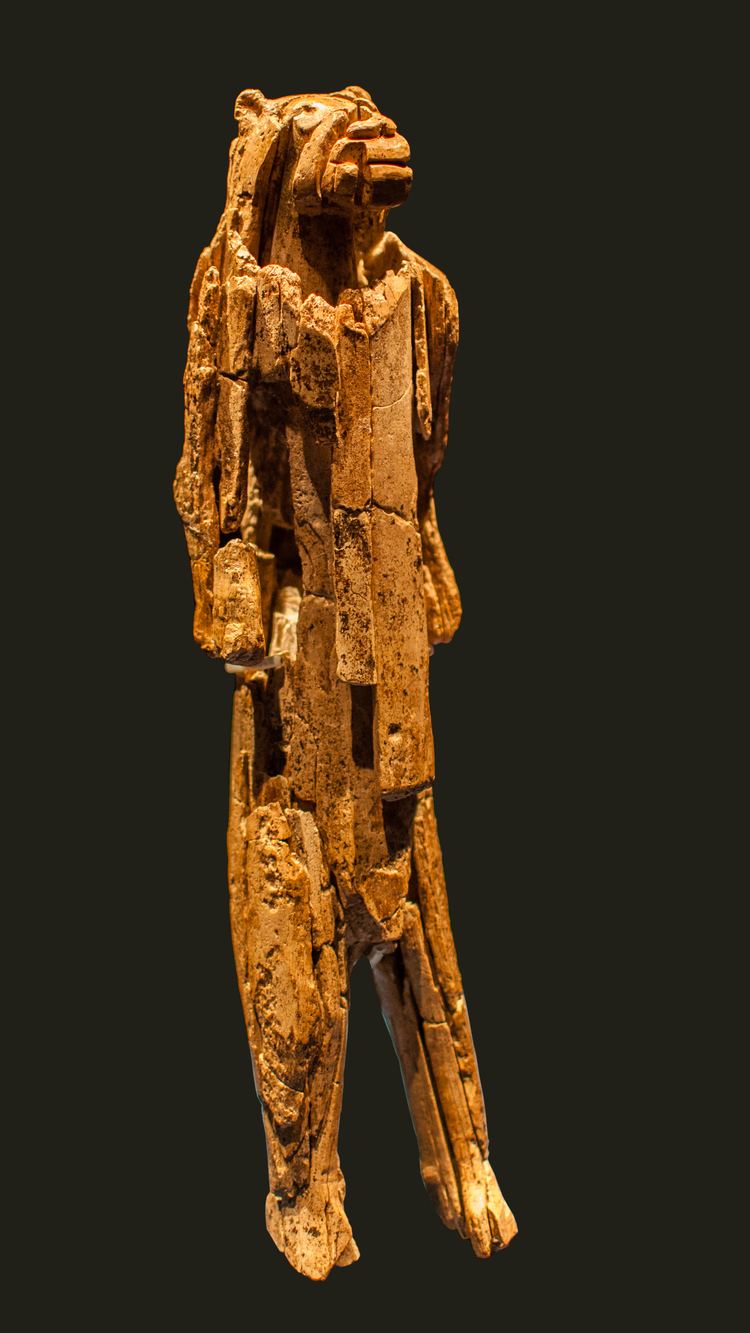
For around thirty years the fragments lay forgotten at the nearby Museum of Ulm. It was not until archaeologist Joachim Hahn started an inventory and assembly of over 200 fragments that a figure with animal and human features began to emerge.
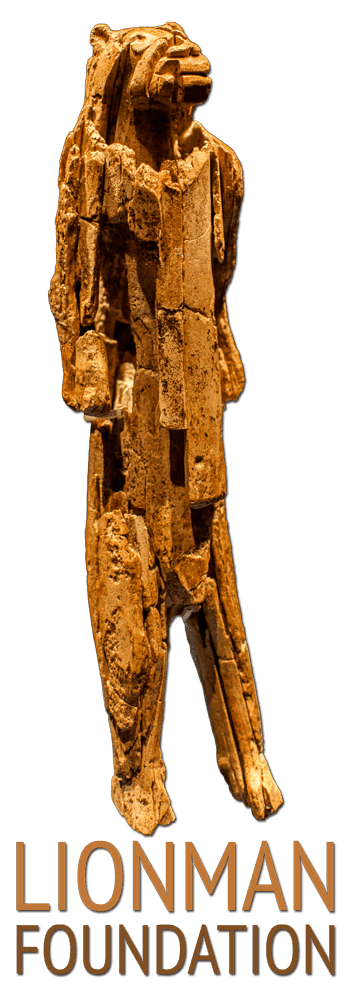
Wetzel continued to spend summers digging at the site until 1961, and further finds of ivory were made on the cave floor in the 1970s. In 1982 paleontologist Elisabeth Schmid combined the new fragments with Hahn's reconstruction, correcting some errors and adding pieces of nose and mouth which emphasized the figure's feline characteristics.
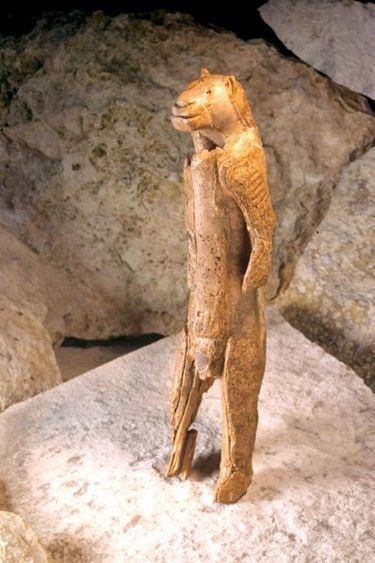
In 1987 a comprehensive restoration began in the workshops of the Landesmuseum Württemberg by Ute Wolf in cooperation with Schmid. During the work, which took over six months, it was realized that the figure was only about two-thirds complete. The back is severely damaged and the legs are missing some ivory lamellae. The ears, eye-holes, two-thirds of the mouth and nose, and the back of the head are preserved. To fill gaps in the head and body a reversible substance consisting of a mixture of beeswax, artificial wax and chalk was used.
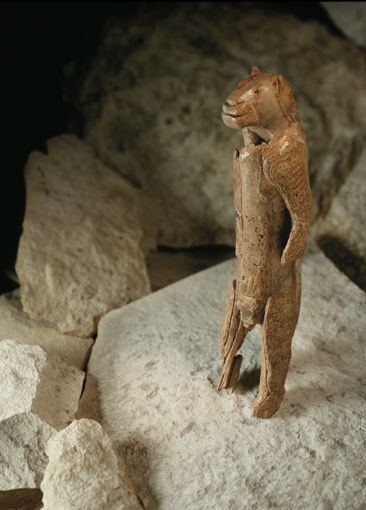
From 2008 further excavations were carried out in the cave. All layers were systematically sifted which led to many minute fragments being discovered. The first new adjustments were simulated virtually so that fragments could be added without having to disassemble the original recreation.
In 2012 a second restoration was begun in the workshops of the State Office for the Preservation of Historical Monuments in Esslingen under the leadership of Nicole Ebinger-Rist. The figure was disassembled into its individual parts and newly discovered fragments were added along with old stock, allowing further completion of areas of the head, back, and right side of the body, and the dispensing of artificial additions from the first restoration. The lion-man grew in height from 296 to 311 millimetres. Work was completed in late 2013.
Interpretation
Initially, the figurine was classified as male by Hahn who suggested a plate on the abdomen could be a flaccid penis. Schmid later classified this feature as a pubic triangle and from examination of new parts of the sculpture, determined that the figurine was that of a woman with the head of a "Höhlenlöwin" (female European cave lion). Male European cave lions often lacked distinctive manes and so the absence of a mane cannot determine categorically that it is a lioness, and a debate about its sex ensued among some people involved in the research and the popular press. Kurt Wehrberger of the Ulm Museum complained that the statue had become an "icon of the feminist movement".
After the 2012/13 restoration it was realized that the triangular platelet in the genital area was processed all around separating it from the figure. A fracture point shows that it was originally square in shape. The current interpretation is that it is most likely a stylized male sex organ.
The lion-man lay in a chamber almost 30 metres from the entrance of the Stadel cave and was accompanied by many other remarkable objects. Bone tools and worked antlers were found with jewellery consisting of pendants, beads, and perforated animal teeth. The chamber was probably a special place, possibly used as a storehouse or hiding-place, or maybe as an area for cultic rituals.
A similar but smaller lion-headed human sculpture was found along with other animal figurines and several flutes in the nearby Vogelherd Cave. This leads to the possibility that the Löwenmensch figurine played an important role in the mythology of humans of the early Upper Paleolithic. Archaeologist Nicholas Conard has suggested that the second lion-figure "lends support to the hypothesis that Aurignacian people may have practised shamanism ... and that it should be considered strong evidence for fully symbolic communication and cultural modernity". Following these discoveries, female figurines from approximately the same prehistoric period, such as the Venus of Hohle Fels, have been discovered in the same mountainous area of Germany by an archaeological team led by Conrad.
The sculpture shares certain similarities with later French cave paintings, which also show hybrid creatures with human-like lower bodies and animal heads such as the "Sorcerer" from the Trois Frères in the Pyrennes or the "Bison-man" from the Grotte de Gabillou in the Dordogne.
Manufacture
The carving of the figurine from hard mammoth tusk would have been a complex and time-consuming task. A similarly sized tusk found in the same cave has marks which "indicate that the skin and thin bone around the tooth cavity of the upper jaw were cut through to the surface of the tooth, which was then exposed for detachment with a hammer. The tip was harder and had to be removed by wedging and splitting."
Wulf Hein and Kurt Wehrberger conducted an experimental reconstruction with the kinds of stone tool available at the time. Removing the base of the tusk took ten hours. The body was carved with steep-fronted scraper; the burins requiring regular resharpening. Several different tools were needed to separate the torso from the insides of the arms while shaping the head and shoulders, which involved difficult cutting across the grain of the ivory, often required two hands on the tool. The basic shaping took around 200 hours, and in total the recreation took over 370 hours. This suggests that, "unless the sculpture was created slowly at odd moments over several months, someone as skilled as an artist may have been excused from other subsistence tasks to work specially on this piece."
